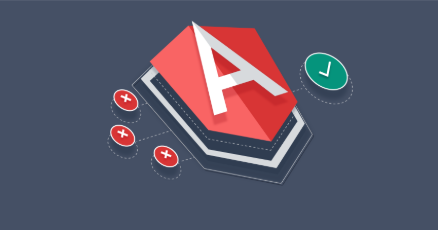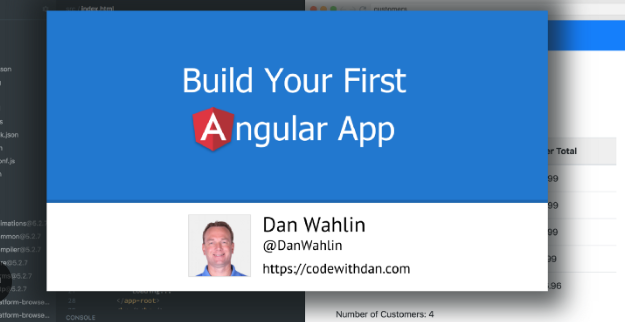
Angular Web development Course in Visakhapatnam | Angular is a powerful, Google-maintained framework for building dynamic, single-page web applications. Angular courses teach you to build these scalable, interactive apps using TypeScript, HTML, and CSS.
What to consider when choosing a course
- Prerequisites: Many courses assume a basic understanding of HTML, CSS, and TypeScript. Beginners should look for courses that cover these topics or take a separate introductory course first.
- Hands-on projects: For practical experience, choose a course that includes building real-world applications to add to your portfolio.
- Certification: Decide if you need an official certificate to showcase your skills to potential employers. Some platforms offer this for free, while others require a paid subscription or separate purchase.
- Learning style: Some people prefer interactive coding exercises, while others learn better from video lectures. Pick a format that suits your learning preference.
Of course. Here is a comprehensive and structured outline for an Angular Web Development Course, designed to take a student from beginner to proficient in building modern, single-page applications (SPAs).
Course Title: Angular Mastery: Building Modern Enterprise Web Applications

Target Audience: Angular Web development Course in Visakhapatnam | Aspiring web developers, front-end developers familiar with basic HTML/CSS/JS, developers from other frameworks (like React or Vue), and anyone wanting to build large-scale, maintainable web applications.
Prerequisites:
- Essential: Strong foundation in HTML, CSS, and core JavaScript (ES6+ features like
let/const, arrow functions, promises, modules are critical). - Highly Recommended: Basic familiarity with TypeScript (types, interfaces, classes) will significantly smooth the learning curve.
- Helpful: Understanding of concepts like the DOM, RESTful APIs, and version control (Git).
Course Goal: Angular Web development Course in Visakhapatnam | To equip students with the skills to design, develop, test, and deploy robust, scalable, and high-performance single-page applications using the Angular framework and industry-standard tools.
Detailed Course Module
Module 1: Foundations – TypeScript and The Angular CLI
- 1.1 Why Angular? Understanding the framework’s philosophy: a full-featured, opinionated platform for building enterprise applications.
- 1.2 TypeScript Crash Course: Angular Web development Course in Visakhapatnam | Deep dive into essential TypeScript for Angular: types, interfaces, classes, decorators, generics, and modules.
- 1.3 The Angular CLI: Your best friend. Installing the CLI, generating a new project, and understanding the command structure (
ng generate,ng serve,ng build). - 1.4 Project Structure: Tour of a standard Angular project. Understanding the purpose of key files and folders:
src/,angular.json,tsconfig.json, and thenode_modulesecosystem.
Module 2: Building Blocks of an Angular App
- 2.1 Components: The fundamental building block. Creating components with
@Component, understanding the component class, template, and styles. - 2.2 Templates & Data Binding: The magic of connecting your TypeScript logic to the DOM.
- Interpolation:
{{ value }} - Property Binding:
[property]="value" - Event Binding:
(event)="handler()" - Two-Way Binding:
[(ngModel)]="property"(fromFormsModule)
- Interpolation:
- 2.3 Directives: Teaching HTML new tricks.
- Structural Directives:
*ngIf,*ngFor,*ngSwitch– altering the DOM layout. - Attribute Directives:
ngStyle,ngClass– changing the appearance/behavior of an element.
- Structural Directives:
- 2.4 Pipes: Transforming displayed data right in the template (
{{ value | date }},{{ value | currency }}). Creating custom pipes.
Module 3: Component Hierarchies & Reusability

- 3.1 Component Interaction:
- Input Properties (
@Input): Passing data from a parent component down to a child. - Output Properties (
@Output): Emitting events from a child component up to a parent.
- Input Properties (
- 3.2 View Encapsulation: How Angular handles CSS scoping (Emulated, ShadowDOM, None).
- 3.3 Content Projection: Using
<ng-content>to create reusable wrapper components (like a custom card or modal). - 3.4 ViewChild & ViewChildren: Angular Web development Course in Visakhapatnam | Accessing child components or DOM elements from the parent class.
Module 4: Dependency Injection & Services
- 4.1 The Concept of Services: Creating reusable classes for data access, business logic, and logging (the “why” behind services).
- 4.2 Dependency Injection (DI) Demystified: Angular’s powerful core feature. How it works: providers, injectors, and tokens.
- 4.3 Hierarchical Injector: Angular Web development Course in Visakhapatnam | Understanding the injector tree (Module, Component, Root) and scope of provided services.
- 4.4 Providing Services: Using
@InjectableandprovidedIn: 'root'vs. adding to a module’s or component’sprovidersarray.
Module 5: Routing & Navigation
- 5.1 Setting Up Routes: Configuring the RouterModule and defining application routes (path, component).
- 5.2 Router Outlet: The
<router-outlet>directive as a placeholder for routed views. - 5.3 Navigation: Using
routerLinkin templates and theRouterservice in classes for programmatic navigation. - 5.4 Route Parameters: Passing and accessing data via routes (e.g.,
/products/:id). - 5.5 Route Guards: Angular Web development Course in Visakhapatnam | Protecting routes with
CanActivate(authentication) andCanDeactivate(prevent accidental navigation away with unsaved changes).
Module 6: Managing State & Data with RxJS
- 6.1 RxJS Fundamentals: The core of Angular’s reactivity. Observables, Observers, and Subscriptions.
- 6.2 Common Operators: Using
map,filter,tap,catchError,switchMap, and more to transform and manage data streams. - 6.3 HTTP Client: Communicating with a backend API. Making GET, POST, PUT, DELETE requests and handling responses as Observables.
- 6.4 State Management Patterns:
- Service-based with RxJS (
BehaviorSubject): A simple and effective pattern for many apps. - Introduction to NgRx (Redux pattern): For complex, large-scale applications with complex state interactions.
- Service-based with RxJS (
Module 7: Forms – User Input Made Powerful
- 7.1 Template-Driven Forms: Quick and simple forms using directives in the template (
ngModel,ngForm). Ideal for simple scenarios. - 7.2 Reactive Forms (Model-Driven Forms): Angular Web development Course in Visakhapatnam | The powerful, preferred approach for complex forms. Creating form models programmatically in the component class (
FormGroup,FormControl,FormArray). - 7.3 Validation: Implementing built-in validators (required, minLength, pattern) and creating custom synchronous and asynchronous validators.
- 7.4 Form Submission & Handling: Accessing form values and status.
Module 8: Optimization & Advanced Topics
- 8.1 Modules & Lazy Loading: Organizing your app into feature modules and lazy loading them to dramatically improve initial load time.
- 8.2 Change Detection Strategy: Angular Web development Course in Visakhapatnam | Understanding
Defaultvs.OnPushfor optimizing performance. - 8.3 Lifecycle Hooks: Deep dive into
ngOnInit,ngOnDestroy,ngOnChanges, and others to control component behavior. - 8.4 Dynamic Components: Loading components at runtime.
- 8.5 Introduction to Testing: Writing basic unit tests with Jasmine and Karma for components and services.
Module 9: Deployment & Beyond
- 9.1 Building for Production: Using
ng build --prod(AOT compilation, tree-shaking, minification, bundling). - 9.2 Deployment: Deploying an Angular application to popular platforms like Vercel, Netlify, Firebase Hosting, or a traditional web server.
- 9.3 Security Best Practices: Sanitizing content, preventing XSS, and using HTTP-only cookies.
- 9.4 The Angular Ecosystem: Brief overview of related tools: Angular Material UI component library, Scully for static site generation, and Nx for monorepo development.
Module 10: Capstone Project
- Angular Web development Course in Visakhapatnam | Students build a significant, full-featured application from the ground up (e.g., a task management app, an e-commerce front-end, a customer dashboard).
- Requirements must include:
- Routing with multiple views and guards.
- Reactive Forms with custom validation.
- HTTP communication with a backend API (can be mock or real like JSON Server).
- State management using Services + RxJS.
- Deployment to a live platform.
- The final deliverable is the source code on GitHub and a live, deployed application.

Recommended Tools & Technologies
- Framework: Angular (latest stable version)
- Language: TypeScript
- CLI: Angular CLI
- Package Manager: npm or yarn
- Reactive Programming: RxJS
- HTTP Client: Angular’s built-in
HttpClientModule - Routing: Angular Router
- Build Tool: Webpack (configured by the CLI)
- Version Control: Git & GitHub
Upon completion, students will be able to:
Learning Outcomes
- Angular Web development Course in Visakhapatnam | Architect and build large-scale, maintainable single-page applications using Angular.
- Utilize TypeScript to write robust, error-resistant code.
- Implement complex user interfaces with components, directives, and pipes.
- Manage application state and data flow effectively using Services and RxJS Observables.
- Create multi-view applications with sophisticated routing and navigation, including route guards.
- Build dynamic and validated forms using both Template-Driven and Reactive approaches.
- Optimize application performance through lazy loading and change detection strategies.
- Deploy a production-ready Angular application to a web server.
This curriculum is designed to be intensive and hands-on, reflecting the demands of modern front-end development roles that use the Angular framework.



